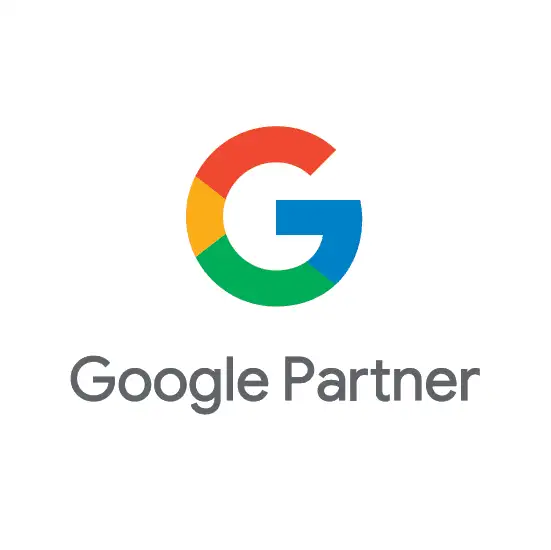Lead generation should be a core performance metric for your business. Studies have shown that the number of good leads you add each month is directly correlated to the amount of revenue you earn. This makes sense since more people being interested in your business should lead to more money.
You can demystify the process of lead generation. There are reliable tactics for getting more people to indicate their interest in your products and services each month. This comprehensive guide will show you how to do it.
What is Lead Generation?
Lead generation is the process of turning strangers into potential customers and gathering their contact information. This gives you a list of people who are interested in what you do and ready to be contacted with more info. It’s a huge boon that can make the job of sales much easier.
The alternative to lead generation is cold calling and/or cold emailing random prospects. This rarely works in the age of web 2.0. People are inundated with ads all day and rarely have the mental bandwidth to give their attention to cold callers. You should generate warm leads to drastically improve the efficacy of your marketing efforts.
How to Generate a Lead
The first step in lead generation is to offer something valuable for free. The freebie is used as a lure to get strangers interested in what you do. Ebooks, free trials, video content, and entertaining social media posts are all examples of this.
You can get your free content in front of people by leveraging blogs. If you write great guest posts and offer them to dozens of the most popular blogs in your space, you’ll get picked up by a few of them. You can include a link to your email list or online signup form at the end of each article.
YouTube videos and other social media content can generate leads too. You can use popular hashtags to generate initial attention and then send viewers from your page to your digital newsletter or signup form. The ultimate goal is to gather personal information such as emails and phone numbers which can be used to contact your leads.
How to Track a Lead
Analytics are a big part of lead generation. You want to learn which of your tactics are getting the best results. Tracking the data lets you see what is working so you can double down on those tactics.
For example, imagine that you have three different lead generation funnels: You are guest posting on blogs, creating Facebook content, and giving away flyers on the street in a major city. The smart thing to do is to use a different signup form for each of these methods. That way you’ll know how many people are joining through each funnel. If it turns out that 90% of your leads come from Facebook, you could ditch the other tactics.
Using Google Analytics is a way to see how traffic is arriving at your website. You can learn about the specific search terms that are leading people to your home page. There may be backlinks from other blogs that are giving you traffic without your knowledge. It’s valuable to learn about these aspects of your traffic flow.
What Tools to Use for Lead Generation
The right tools for your business depend on how much money you can invest. On the more affordable side, you can get a lot of mileage out of a good email marketing platform. This is a way to gain access to email scheduling, separate email lists for different kinds of leads, pre-built templates, and integrated signup forms.
If you want to make a heavier investment into lead generation, you could invest in a full CRM system. These are web interfaces that allow you to keep track of each lead and see where they are in the sales funnel. When you have thousands of new leads each month, it’s crucial to have a clear interface that tells you who hasn’t received a call yet, who is almost ready to buy, and everything in-between.
Search AdWords
Effective advertising is a way to speed up and streamline your lead generation process. Google AdWords are the gold standard for this. Using AdWords requires some up-front money but it’s worth it. If used well, AdWords can become an income stream unto itself for your business.
You probably shouldn’t compete for the biggest AdWords. When you try to advertise on a term like “soda,” you go up against a monolithic business like Coca-Cola. It’s better to find a long tail keyword such as “Denver local soda brands” or “sugar-free root beer.” These will be more specific, reaching a group of leads that are more specific to what you do and more affordable to get in touch with.
Of course, you won’t be advertising with soda-related keywords. You should extrapolate from those examples and think about long tail keyword phrases that make sense for your products. As a rule of thumb, you should aim for keyword phrases that are at least four words long and receive between 10,000 and 100,000 hits per month.
Display Advertising
Display advertising is the old school way to generate leads. This is when you pay to run ads as banners and sidebar images on popular websites and blogs. These kinds of ads can offer seductively affordable CPMs and feel good because they’re so visible.
The honest truth is that display advertising is not as effective as it once was. Few people are paying attention to banner ads these days, and pop-ups often make prospective customers angry at your brand.
The best choice here is to sponsor integrated content. You can pay to run a news article on popular media sites like Buzzfeed or Huffington Post which relates to your brand. This kind of content is clearly labeled as sponsored content but gets significantly better engagement than more traditional forms of advertising.
Social Media Marketing
Social media is the present and future of online advertising. Facebook, in particular, offers extraordinarily precise targeting and flexibility with how you advertise.
The key to effective social media advertising is to be brave and try new things. The tried and true methods, like running Facebook ads for popular keywords, are often too expensive for young brands. Try running ads on newer platforms like Snapchat or Musically to get great value and the highest possible engagement on your advertisements. When you do use Facebook, focus on long tail keyword phrases just like you do for AdWords.
Don’t be boring. You need to stand out from the crowd if you want your advertisements to generate quality leads. Draw a line in the stand and find a way to express what your brand really stands for. The best ads make your target market very excited while often completely turning off people outside your demographic.
Remarketing Tactics
When a person browses the internet, their computer keeps information from each website it visits. This data is stored as a “cookie” and publicly tracks some of the user’s browsing history. You can take advantage of cookies to remarket your ads.
Remarketing is the act of advertising to people who have visited your website before. You know they were on your site in the past, and therefore you can assume they have some interest in your brand. This is as good of a marketing demographic as you’ll find anywhere.
Fine tune your ad copy to fit the remarketing scenario. Your ad can reference the fact that the person has been on your website before. Saying stuff like “Did you forget to sign up for the mailing list? It’s not too late,” gives the user a logical context for revisiting your brand and sharing their contact information.
Discovering More Potential Customers
As you start gathering data on your ads, you can use analytics to find more leads. Your best target demographic might be different from what you initially think. Figuring this out is crucial so you can avoid wasting money on poorly targeted ads.
You can use algorithms that analyze your ad engagement and recommend other audiences to tap into. What if there is a certain location, age, psychographic profile, etc. that is a perfect fit for your product? You don’t want to miss out on that opportunity.
Google offers this as part of their AdWords service and can combine audience analysis with remarketing techniques to identify the most profitable opportunities for your business. This is a great way to get started with using algorithms to find new customers.
The Secret Formula for Lead Generation Success
You have a lot of tools at your disposal to generate leads. What’s the perfect formula for using them all in the most effective way? While there isn’t a specific step-by-step method that will fit every single brand, there is a general approach that usually works.
The key is to start small. Pick a single demographic and a few different tactics to work with, then iterate quickly on those ideas until you learn how to use them effectively. You could begin by using Facebook ads and social media marketing for the first three months. After you find an effective workflow for that, you could expand to Google AdWords and email marketing. This kind of long-term strategy helps you tackle lead generation in an ambitious yet manageable way.
Become a master of lead generation on a small scale and then turn it into an empire. Your business will generate more revenue, and you’ll have a replicable path to gaining new customers in the future. The most important thing is just to start.









